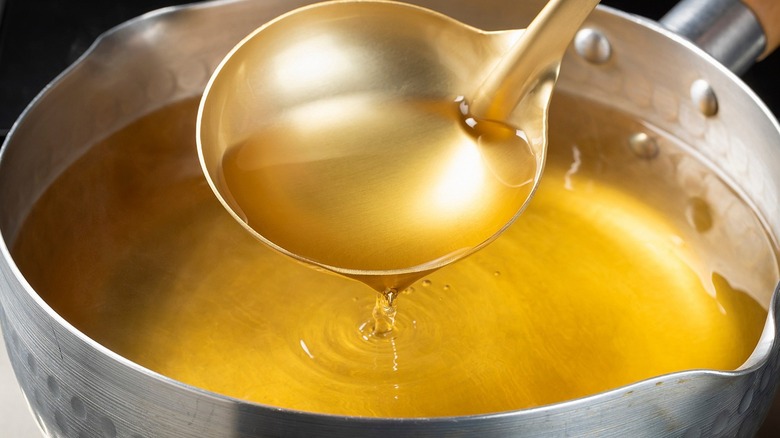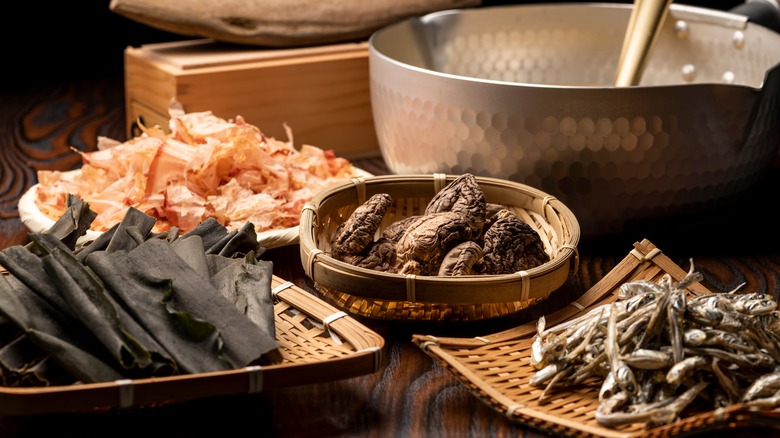The Golden Ratio To Remember For Delicious Dashi Broth
Japan is home to shokunin, a remarkable concept that perhaps no other culture shares (via Pop Japan). Shokunin are artisans or craftsmen who are so devoted to their work that they become masters in their fields: masters of slicing fish for sushi, frying airy light tempura, sculpting candy, you name it. This may also explain why Japanese food seems to have reputation for being pared-down in ingredients yet too complex to replicate perfectly at home.
But Japanese cuisine celebrates simplicity and making the most of minimal ingredients, which means that mastering a few basics can make everyday Japanese cooking much easier to try at home. According to Tokyo Weekender, several cuisines have a basic stock that most dishes are built on, and dashi happens to be the foundational stock of Japanese cooking. Just One Cookbook author Namiko Chen calls dashi "all-important and indispensable," as it is "the backbone of many Japanese dishes."
While dashi is the base stock used to make miso soup, it can also be used as a key layer in building hot pots, noodle soups, and stews. Dashi can even be turned into a sauce to add a rich umami flavor to any dish. Plus, it's relatively quick and easy to make dashi at home, while other stocks require hours and hours of simmering. As long as you nail the ratio of dashi's components, you're all set to whip up a Japanese feast in no time.
Dashi is a careful balance of four ingredients
Chen explains that dashi is most often made from a combination of kelp called kombu, anchovies or sardines, shiitake mushrooms, and bonito flakes, all in their dried form. All of these ingredients are high in glutamates, which give dashi its irreplaceable umami flavor.
While dashi can be made with just one of these ingredients or a combination of two, manager Shohei Miyajima of Brooklyn-based Japanese store Dashi Okume tells Thrillist that he recommends using all four: "Combining a bit of everything makes the level of umami about eight times higher than just using a single ingredient." But that doesn't mean tossing in equal proportions of all four ingredients. Miyajima swears by what he calls a 5:3:3:1 ratio to make a balanced dashi. Half of the dashi is katsuobushi, or bonito flakes, followed by 30% anchovies. The remaining 20% of the broth should be made with equal parts shiitake mushrooms and kombu.
The store also suggests not letting the dashi boil for any longer than five minutes, as that can make the delicate broth bitter as well as gooey. EatingWell also notes that dried kombu comes with a layer of natural salt that shouldn't be rinsed away, as it plays an important role in the deeply savory flavor of dashi. Additionally, once you have homemade dashi, it can be frozen for as long as three months and used to make all sorts of Japanese and non-Japanese delicacies.

